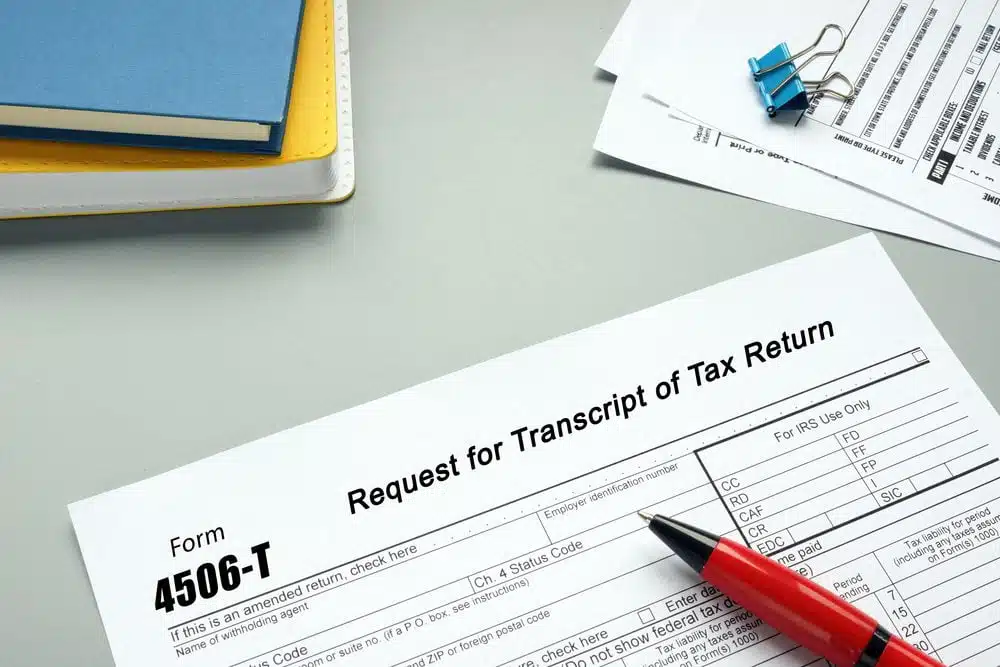Unlocking the Secrets: How to Easily Get an IRS Transcript
When it comes to dealing with the Internal Revenue Service (IRS), obtaining the necessary documentation can sometimes feel like navigating a labyrinth of bureaucracy. One such document that individuals may need is an IRS transcript. But what exactly is an IRS transcript, and why would someone need it? In this comprehensive guide, we will explore the different types of IRS transcripts, the reasons why you may require one, and the various methods available to easily obtain them.
What is an IRS transcript?
An IRS transcript is a document that summarizes information from your tax return. It includes details such as your reported income, deductions, credits, and any tax payments made. Essentially, it provides a snapshot of your financial history with the IRS. There are different types of transcripts available, each serving a specific purpose. These include tax return transcripts, tax account transcripts, wage and income transcripts, and record of account transcripts. Understanding the differences between these types is crucial when requesting the correct document.
Why would you need an IRS transcript?
There are several reasons why you might need an IRS transcript. First, when applying for a loan or mortgage, lending institutions often request proof of your income and tax history. An IRS transcript serves as official documentation of your tax return and can provide lenders with the necessary information they need to make an informed decision.
Additionally, if you are applying for financial aid, such as student loans, grants, or scholarships, providing an IRS transcript can help verify your income and ensure that you are eligible for the assistance you are seeking. It acts as a reliable source of information for educational institutions and government agencies.
Moreover, an IRS transcript can be useful for individuals who want to review their tax records for personal reasons. It provides a comprehensive overview of your tax details, including filing status, taxable income, and payment types. By obtaining an IRS transcript, you can gain insights into your financial history and make informed decisions about your future financial planning. Additionally, if you are a business owner, you may need to access a business tax transcript for a variety of reasons, such as applying for a loan or verifying your tax information for a potential business deal. More specifically, if you are a business owner, you may need to access a business tax transcript to accurately file your business taxes and ensure compliance with IRS regulations.
Ways to get an IRS transcript
The Internal Revenue Service offers different methods for individuals to obtain their IRS transcripts. These methods include online access, mail-in requests, and phone services. Let’s examine each of these options thoroughly. You can get your IRS Transcript just by Calling.
Online
One of the most convenient ways to access your IRS transcript is through the IRS Online Account feature provided by the IRS. By creating an account on the official IRS website, you can securely view, print, or download various types of transcripts, including tax return transcripts, account transcripts, and other transcript types. Once you’re logged in, navigate to the “Get Transcript Online” section, where you’ll find options to select the specific type of transcript you need. This method allows for immediate access to your transcripts, making it incredibly convenient for individuals who require fast and easy access to their tax records.
By mail
Another method to obtain an IRS transcript is through mail-in requests. The IRS offers a service called “Get Transcript by Mail,” which allows taxpayers to request a tax return or tax account transcript to be delivered to their mailing address for the current year. Typically, transcripts requested through this method are delivered within 5-10 calendar days of the current year. To initiate the process, you can either use Form 4506-T or submit a written request containing your personal and tax information. Form 4506-T can be accessed on the IRS website under the “Forms, Instructions, and Publications” section. It’s important to note that transcript requests made through mail may take longer to process than online or phone services.
By phone 800-908-9946
If you prefer a more direct approach, you can access the IRS’s automated phone transcript service. By dialing 800-908-9946, you can request a tax return or tax account transcript to be delivered to your mailing address. Similar to mail-in requests, transcripts requested by phone are typically delivered within 5-10 calendar days, and if you have a refund, you may receive it even sooner. It’s important to have your personal and tax information readily available when making the phone call to ensure a smooth and efficient process for requesting a refund.
How to request an IRS transcript in person
If you prefer the personal touch, you also have the option to request an IRS transcript in person. You can visit your local IRS Taxpayer Assistance Center and request the desired transcript. The IRS staff will guide you through the process and provide you with the necessary documents. It’s important to note that due to the ongoing COVID-19 pandemic, in-person services may be limited or unavailable. Therefore, it’s recommended to check the availability and schedule an appointment in advance.
Understanding the different types of IRS transcripts
When obtaining an IRS transcript, it’s important to understand the different types available and which one best suits your needs. Here are the main types of IRS transcripts:
Tax Return Transcript
A Tax Return Transcript displays most line items from your original Form 1040-series tax return as filed, along with any accompanying forms and schedules. It doesn’t display any updates made after you filed your initial return. This type of transcript is usually sufficient for lending institutions offering mortgages, as it provides a comprehensive overview of your tax history.
Tax Account Transcript
A Tax Account Transcript provides basic data such as filing status, taxable income, and payment types. It also shows any changes made after you filed your original return. This transcript is particularly useful if you made estimated tax payments or applied an overpayment from a prior year’s return. It can confirm your payments before filing your tax return in June, and you can request the transcript in mid to late June.
Record of Account Transcript
A Record of Account Transcript consolidates both the tax return and tax account transcripts into a single comprehensive document. It offers a comprehensive overview of your tax details, including filing status, taxable income, payment types, and any changes made after filing your original return. This transcript is useful if you need a detailed record of your tax history.
Wage and Income Transcript
A Wage and Income Transcript displays data from information returns that the IRS receives, such as Forms W-2, 1098, 1099, and 5498. This transcript provides a detailed record of your income and taxes withheld, which can be helpful when verifying your income for various purposes, such as loan applications or financial aid. This transcript can also be used for income verification, including for tax preparation, tax representation, or other financial purposes. For Tax Preparation, you need to ask for an “Unredacted Transcripts” or an “Unmasked Transcript” to get employer information.
Verification of Non-filing Letter
A Verification of Non-filing Letter is a document stating that the IRS has no record of a filed Form 1040-series tax return for the year requested. It is important to note that this letter does not necessarily mean you were not required to file a tax return for that year. It simply indicates that the IRS has no record of it.
Tips for successfully obtaining an IRS transcript
To ensure a smooth process when obtaining an IRS transcript, consider the following tips:
- Prepare necessary information: Before requesting an IRS transcript, gather all the necessary information, such as your Social Security number, date of birth, and tax filing status. Having this information readily accessible will facilitate the process.
- Choose the appropriate method: Depending on your preference and urgency, choose the most suitable method for obtaining the transcript. Online methods provide instant access, while mail and phone options may take a few days.
- Double-check the information: When requesting an IRS transcript, carefully review the information you provide to avoid any errors or delays. Ensure that the details match what the IRS has on file to avoid any discrepancies.
- Keep a record: Once you have obtained the IRS transcript, make sure to keep a copy for your records. It’s always a good idea to have a backup in case you need it in the future.
FAQs
What is the processing time for Form 4506-T?
The processing time for Form 4506-T transcript requests is typically within 10 business days. However, it’s important to note that this timeframe may vary depending on the volume of requests received by the IRS. It’s advisable to submit your request well in advance to ensure you receive your transcript within the desired timeframe.
How can I check the status of my transcript request?
To check the status of your transcript request, you can use the online tool provided by the IRS. Simply visit the IRS website and navigate to the “Check the Status of Your Transcript Request” page. From there, you will be prompted to enter the necessary information to track your request.
What if I can’t find what I need in my transcript?
If you are unable to find the information you need in your transcript, it’s recommended to reach out to the IRS directly for assistance. They have dedicated representatives who can help address any concerns or provide additional guidance regarding your tax records.
Conclusion
Obtaining an IRS transcript is a crucial step in managing your tax affairs and ensuring financial stability. Whether you need it for loan applications, tax disputes, or simply to keep track of your financial records, there are various ways to easily obtain an IRS transcript. By utilizing the online, mail, or phone options provided by the IRS, you can access your tax records efficiently and conveniently. Remember to familiarize yourself with the different types of transcripts available to ensure you request the appropriate one for your needs. Unlock the secrets of getting an IRS transcript and take control of your tax history today.




